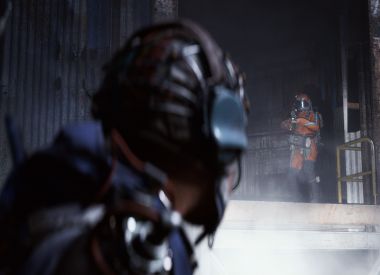Betrayal Legacy, a fusing of the “Legacy” genre of board games with popular horror-themed romp Betrayal At House On The Hill, was announced at this year’s PAX Unplugged and Player.One had the opportunity to sit down with designer Rob Daviau to talk all about the project. While Daviau was sure to keep major secrets close to his chest, he shared what people can expect in the upcoming game from Avalon Hill.
“Betrayal Legacy is kind of like the origin story of one possible history of this house,” Daviau told Player.One. “It spans over 13 chapters, and each chapter is a different generation of these same families that go in the house.” This means even if you die during one chapter, you’ll be able to continue to the next chapter as your character’s niece, nephew, cousin, grandchild or some other relative. To make it easy for character creation, the new characters all have similar stats as their ancestors.
“Even though people die, the story is going to keep moving forward,” Daviau said. “It’s also possible, if you live, to play as an older version of the same character in the next generation.”
The first chapter for Betrayal Legacy will take place in 1666, an appropriately spooky year, and its chapters will take the game to the family of present day. By taking the Betrayal concept into different time periods, it gives Daviau more wiggle room to play with different ideas of what scares us.
“The original Betrayal hits a lot of tropes from horror movies, and by going back in time, we can start to look at things like folklore and mythology and beliefs and novels and things that were of that time,” said Daviau. “It’s something where we can say, ‘It’s 1720, what’s scary now?’”
Betrayal set in the 1700s would be different from modern times, and Daviau and the rest of the team have thought of virtually every question or possible timeline inconsistency players may encounter. Although players may inevitably find some things that do not perfectly line up, Daviau thinks that’s OK:
“What I think the game does well here is it gives you 10 things that are easy to connect and make a story out of,” said Daviau. “If nine fit, you can kind of ignore the tenth one.”
At the same time, you need to remember this is a horror game and things aren’t going to be what you expect. While you aren’t going to find a computer room back in 1666, you very well might find a stable in the present day. “We tried to make the house grow both logically with the time and illogically because it’s a haunted house,” Daviau said.
Once done with each chapter, Daviau says the goal is to have a section for players to write a recap of what happened while playing. “What you’re trying to do is write one backstory for Betrayal. Once you’re done with Legacy, you’ll have seen roughly one third of the haunts, but it’s been shaped by your experiences,” he said. “Sometimes in your control, often out of your control. You can end up telling ghost stories of your experience.”
If you’re a Betrayal expert, you’ll be able to jump into Betrayal Legacy incredibly quickly. The core gameplay remains unchanged, but there are a few minor tweaks to help fit it into a Legacy system. Actions have been expanded and added rules help clarify when these actions are supposed to happen. Haunt rolls have also been adjusted to ensure no chapter goes by too quickly or drag on for too long.
Betrayal Legacy introduces a new Heirlooming system as well. “People can find items and, once per game, choose if they want to heirloom it,” explained Daivau. “If your descendant has the item, they will get a bonus with it. For example, let’s say you have a sword that gives you a +1 to attack. Both you and I would get the +1, but if you got the sword again, you might also get +1 speed.”
The heirlooming of items also gives players the opportunity to name the item for more flavor and individuality to the player’s game. “Something I imagine is once you’re done and you have someone who wasn’t part of the campaign play, they might pull out a named item card,” said Daviau. “They might say ‘why does this card have this name?’ and you can pull out your game summary and say ‘let me tell you. It was 1820...’”
Once you’ve finished the campaign, Betrayal Legacy enters into a freeplay mode. While in freeplay, you can use what you set up in the Legacy campaign and play a standard game of Betrayal At House On The Hill. “This was deliberately done so when you finish, you have a completely new set of Betrayal,” Daviau said, explaining that there are all new Haunts in Legacy that haven’t been experienced yet.
Betrayal Legacy has a planned release window of Fall 2018, but design, manufacturing and shipping issues could cause delays. Keep an eye on Player.One as well as the Avalon Hill and Wizards of the Coast social feeds for more information as we get closer to release time.
So what do you think? Are you excited to see what will happen over the course of Betrayal Legacy? What time period are you most excited to explore a haunted house in? Let us know your thoughts in the comments section below.


















